Struik Nature continues to be the best distributor of up to date and informative Field Guides for South African Wildlife, from Fauna to Flora they have us covered. With leading experts as their authors and beautiful colourful photography their collection of Field Guides are an absolute must for curious nature lovers.
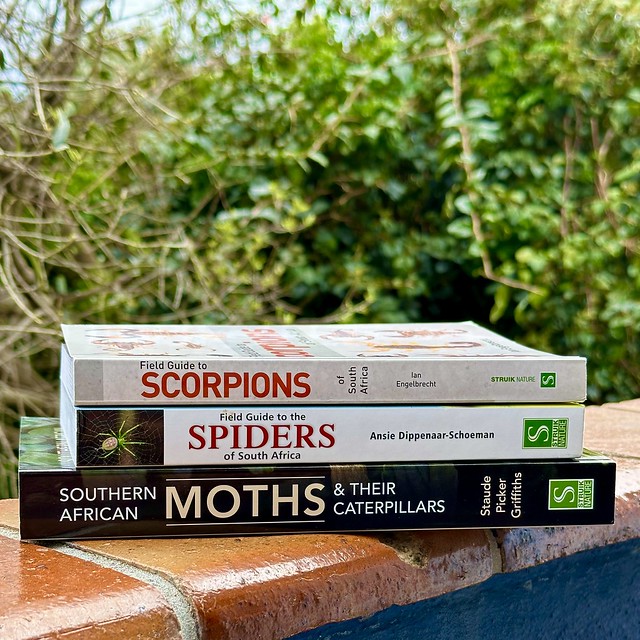
You can find all the Field Guides on the Struik Nature Website.

Field Guide to Scorpions of South Africa
This is a fabulous field guide to add to a collection of local field guides, after all, if you are out hiking in the wilds, you will most likely encounter a scorpion or two and the more you know about them, the more interesting your encounter and observations will be.

Scorpions are creatures that most of us learned at an early age, to leave alone at all costs. Scorpions are known to be dangerous and as children in the veld we were encouraged to avoid them. But we keep encountering them. And recently began to look at them a little closer. They are fascinating creatures and deserve our attention. An invaluable Field Guide is out, an entire book devoted to the scorpions of South Africa. There is a quick ID guide on the inside covers, photographs with page numbers, so that you can quickly turn to the scorpion you have encountered.
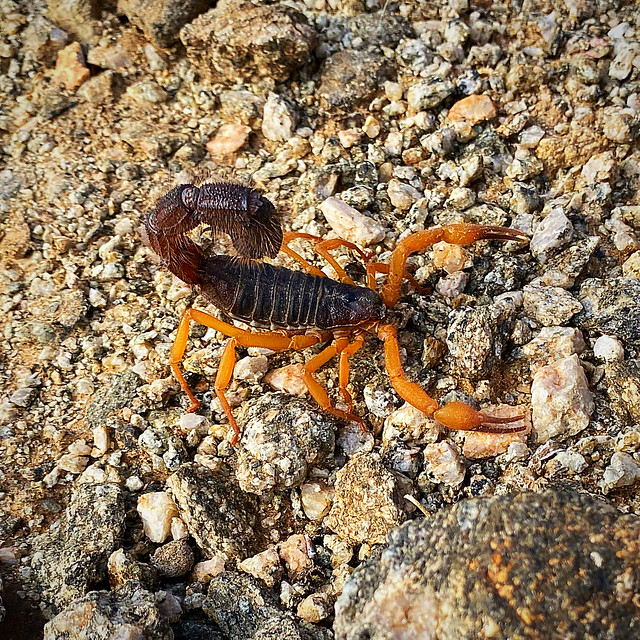
The introduction is fascinating, an all round introduction to scorpions. There are loads of useful facts about scorpions, where to find them, how to look at them more carefully, what to look out for. The three families of scorpion are introduced: Thicktails, Creeping and Burrowing scorpions, and then the book is divided into three sections, with double page spreads for each known scorpion.
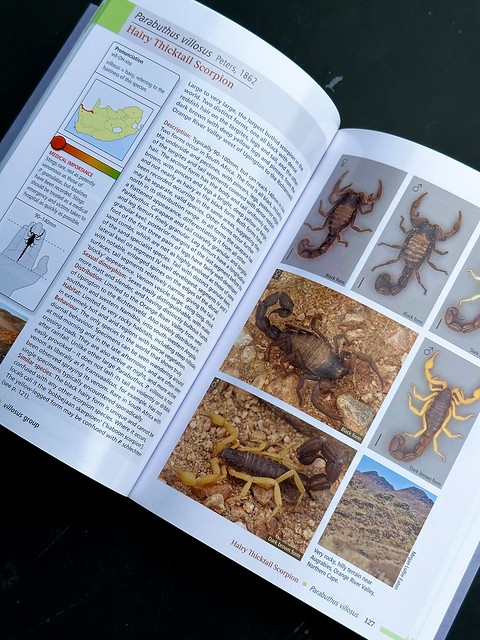
Each type of scorpion gets a double page spread with a distribution map, a size guide and full colour photographs to help with identification, and a detailed description of their habitat, environment and behaviour. Another handy feature of this book is that once you have identified your scorpion there is also a “medical importance” block of information, with a venomosity scale, which will tell you at a glance if a sting is going to just hurt a lot or if you need immediate medical attention.
Field Guide to Spiders of South Africa

If you ever want to empty a room fast just shout spider, for some reason these creatures are much maligned. Just a quick dip into the introduction of this field guide will have you astounded at the diversity of this classification, the World Spider Catalog has more than 50000 spider species described in it. This book will let you get to know spiders a lot better. For example, spiders are remarkable silk makers, creating the strongest most flexible fibre in the world, they have multiple uses of silk, it is not just for web building!

The introduction also includes information about spider lifecycles, their biomes, how to observe and track them. The section I found most interesting was the section on venom and why spider bites are so painful: neurotoxic venom, versus cytotoxic venom. Neurotoxic venom affects one’s nervous system and cytotoxic venom affects the area around the site of the bite… and after reading this, I can confirm that it is best to avoid spider bites!

Spiders are classified into three groups: Web dwellers, Plant dwellers and Ground Dwellers. The book is divided into these three sections… the introduction to each section is fascinating in itself, just the variety of different dwellings these creatures create is intriguing. Within the three sections of the book, each spider has colour photographs, a brief description, a distribution map as well as the conservation status.
Southern African Moths and their Caterpillars
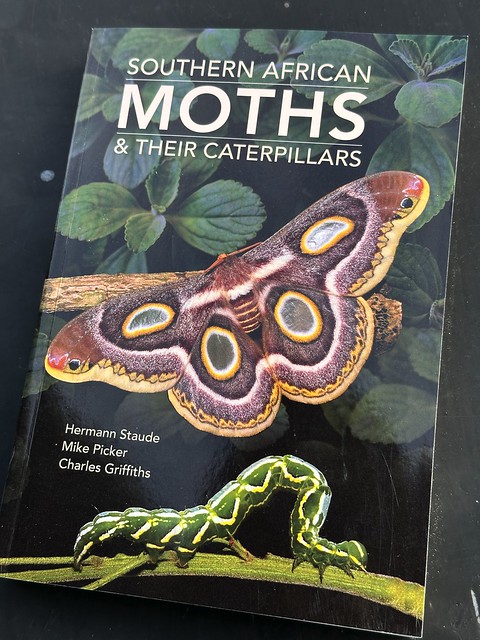
This is an extremely useful reference guide. We recently went on our annual spring walk through the West Coast Wild flowers, and on the particular day, the sun was not out but the caterpillars were… it became an intriguing caterpillar walk and this book proved to be a useful guide.
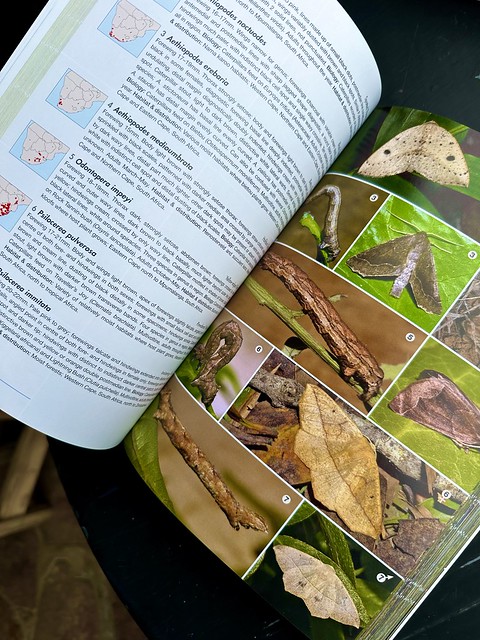
There is a lot to learn about moths, and this reference book is the ultimate guide. Typically I dive into a Field Guide when I have spotted something interesting and want to learn more about it, but this book had me in the Introduction… the diversity of moths is spectacular, just the details in their wing features had me intrigued.

There is information on the life cycle, how caterpillars and moths defend themselves and where to find them. There is a section on how to be a citizen scientist and then a very useful guide on how to use the book.

The book is divided into families and there are full colour photographs of the moth and their caterpillars. There are distribution maps, a brief description of their biology and habitat… but it is the collection of photographs that makes this book so useful, you really can find what you are looking at by searching the book for the photograph, and digging into the detailed information to learn more about what you are observing.

Amazon Affiliate Links for Books Mentioned in This Post.

These books were given to us for review purposes by Struik Nature. This is not a sponsored post and opinions expressed are entirely our own.


